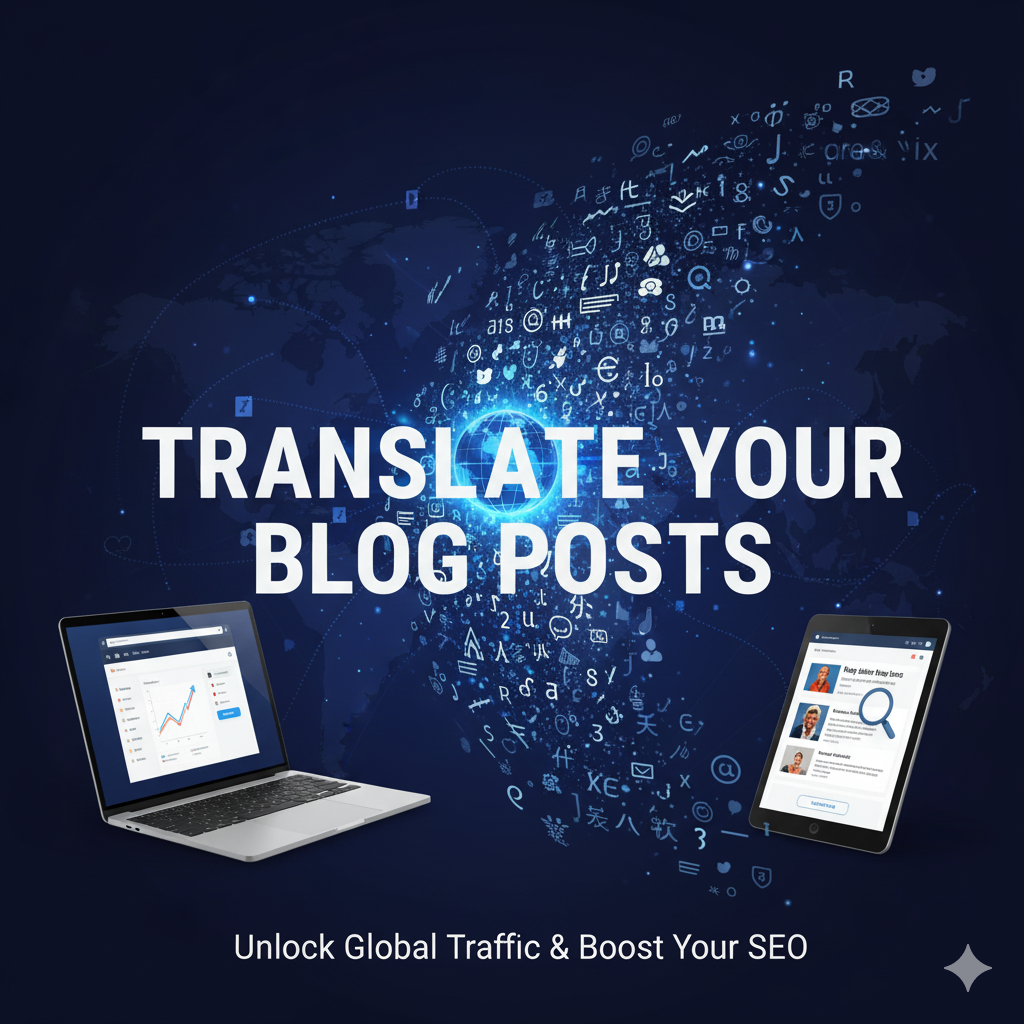In the digital era, your audience isn’t confined to a single geographic region or language. Yet, many businesses unintentionally cap their own growth by publishing content in only one language. While English may dominate the internet, it is far from the only language driving search traffic.Translating your blog posts is not just a gesture of global inclusivity; it is one of the most powerful, yet often overlooked, strategies for unlocking new search traffic, boosting SEO performance, and establishing true authority in untapped markets.This isn’t about running your text through a free machine translator. This is about a strategic, targeted investment in creating quality, localized content that directly addresses the needs of billions of non-English speaking searchers.
1. Accessing Untapped Markets and Massive Query Volume
The most immediate and profound benefit of translation is the sheer volume of new potential traffic you open up.The Scale of the Non-English WebWhile English accounts for a significant portion of all content, the majority of the world’s population does not use it as their primary language. Consider Spanish, Mandarin, Portuguese, German, and French—each represents hundreds of millions of internet users conducting billions of localized searches every day.
By translating your content, you move from competing against every other English-language resource in a saturated market to becoming an authoritative voice in a potentially less crowded, high-value niche.
Targeting Long-Tail Keywords in Local Languages
Search engines are highly optimized for localized queries. A search for a niche, long-tail keyword in Spanish is far more likely to surface Spanish-language content than a translated English article. When you translate your post, you inherently start ranking for those local long-tail terms—queries that your original English post had zero chance of capturing. This is an immediate, direct boost to your traffic potential.
2. Technical SEO Benefits of Localization
Effective translation goes hand-in-hand with smart technical SEO practices, primarily through the use of Hreflang tags and Localized URL Structures.
The Crucial Role of Hreflang TagsFor Google to understand that your English post and your Spanish post are about the exact same topic but intended for different audiences, you must use Hreflang tags in your site’s HTML header.
The Hreflang tag tells Google:
“This page is the German version of the main content, and here is the link to the original English version.”
SEO Benefits of Hreflang:
Prevents Duplicate Content Penalties: Google understands that the translated text is not plagiarized; it’s an intended variation for a different region.
Correct Ranking: It ensures the correct language version appears in the search results for the correct user. A user in Mexico should see the Spanish version, not the English one, guaranteeing a better user experience and reducing bounce rate.
Consolidates Authority: By linking the versions, you help Google consolidate the authority signals (like backlinks and page rank) across all linguistic variations of the same content.
Localized URL Structure
Using an appropriate URL structure is essential for clear site architecture and user experience. The two most common methods are:
Subdirectories: yoursite.com/es/post-title (Recommended for most businesses)
Subdomains: es.yoursite.com/post-titleA clean, predictable URL structure signals to search engines exactly which content is meant for which region, further reinforcing your Hreflang strategy.
3. The Power of Localized User Experience (UX)
SEO isn’t just about keywords and tags; it’s fundamentally about providing the best possible user experience. A translated blog post immediately and dramatically improves UX for non-native speakers.
Lower Bounce Rates and Higher Engagement
When a user clicks on a search result and finds a page perfectly tailored to their language, they are far more likely to engage:
Time on Page Increases: They can actually read and digest the information comfortably.
Bounce Rate Decreases: They don’t immediately leave because the content is not in their preferred language.
Conversions Improve: A user is more likely to trust and convert on a page that communicates clearly and effectively in their mother tongue.These positive engagement metrics are strong signals to Google that your content is high-quality and relevant, leading to improved rankings across all language versions.
Gaining Local Authority and Backlinks
When your translated content is genuinely high-quality and culturally accurate (more on that below), it becomes a valuable resource for local websites, industry blogs, and news sources.
A Spanish-language industry blog is much more likely to link to your expertly translated Spanish post than to your original English one. These localized backlinks are incredibly valuable for SEO, building your authority within a new linguistic segment of the internet.
4. The Critical Difference: Translation vs. Transcreation
To reap these SEO benefits, the translation must be excellent. Free tools are insufficient and can damage your brand credibility. The key lies in understanding the difference between simple translation and transcreation.
Translation is converting words from one language to another.
Transcreation is adapting the content while maintaining its intent, style, tone, and context, ensuring it is culturally relevant and resonant with the target audience.
For example, a metaphor, idiom, or cultural reference that works in American English might be meaningless or even offensive in German. A professional linguist ensures the final content is not just grammatically correct, but also naturally authoritative—the kind of content that earns links and social shares.
Translation as a Growth Engine
Translating your blog posts is a high-leverage SEO strategy that simultaneously tackles competition, improves technical structure, and elevates user experience on a global scale.
By strategically identifying high-performing English posts and investing in high-quality localization, you are not just duplicating effort—you are multiplying the traffic and authority of your best content across dozens of new markets. The long-term return on investment from this strategy far outweighs the initial cost, positioning your brand as a truly global authority and unlocking a powerful, sustained boost to your organic traffic.

